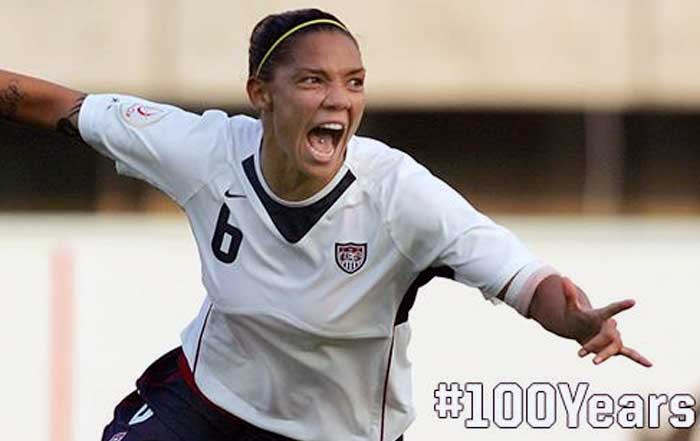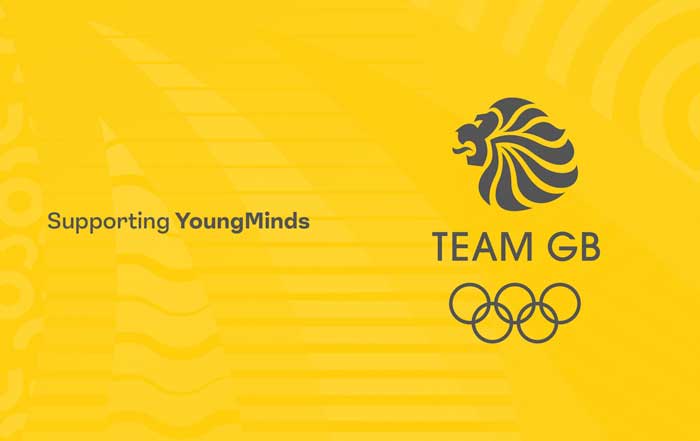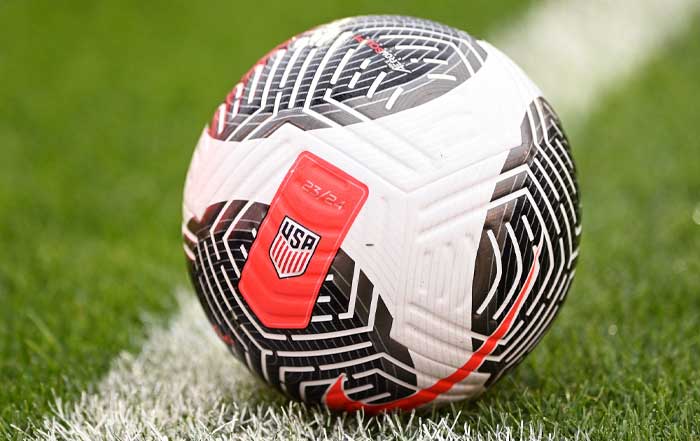The narrative of women’s sports has undergone a remarkable transformation over the past few decades, moving from the margins of media attention to a position of increasing visibility and respect within the global sports industry. Now his evolution is not only shaping the careers of female athletes but also redefining business models, fan engagement strategies, cultural representation, and the economic significance of sports. The journey of media coverage of women’s sports reflects broader societal shifts toward gender equity, inclusivity, and the recognition that sports are as much about influence and identity as they are about competition. For readers of FitPulse News, this transformation holds deep resonance because it sits at the intersection of fitness, health, business, and culture, and reflects the global nature of sports engagement today.
This article explores the multifaceted evolution of media coverage of women’s sports, examining its historical underpinnings, the role of technology, the changing dynamics of sponsorship, the global growth of women’s leagues, and the cultural conversations shaping perceptions of female athletes. It will also analyze how innovations in digital platforms, shifts in audience demographics, and the increasing professionalism of women’s competitions are propelling coverage forward. By contextualizing women’s sports in both global and regional terms—spanning the United States, United Kingdom, Germany, Canada, Australia, Asia, and beyond—this article illustrates how the current era is marked by unprecedented opportunity for growth, empowerment, and transformation.
The Historical Margins: From Underrepresentation to Recognition
For much of modern sporting history, women’s competitions were relegated to secondary status in media coverage. Throughout the 20th century, men’s professional leagues dominated broadcast schedules, print coverage, and sponsorship narratives, leaving female athletes with fragmented exposure. Sports journalism often framed women’s events as niche or novelty, undermining the athletic excellence and commercial viability of women’s competitions. This marginalization had profound implications for the visibility of role models, the scale of fan bases, and the development of sustainable professional leagues.
The tide began to turn during landmark events such as the 1999 FIFA Women’s World Cup, when record-breaking crowds and television audiences demonstrated that women’s sports could capture mass attention. The triumph of athletes like Serena Williams, Mia Hamm, and Cathy Freeman further highlighted how individual excellence could force media outlets to acknowledge the global appeal of female athletes. Yet, progress was uneven, and many leagues struggled with limited airtime and fragmented sponsorship opportunities.
The 2010s marked a pivotal decade when digital media disrupted traditional gatekeeping structures. Platforms such as ESPN, BBC Sport, and emerging digital-first outlets began expanding their coverage of women’s sports, responding to grassroots demand amplified through social media. The shift signaled the beginning of a broader realignment in how audiences consume and engage with women’s competitions.
The Role of Digital Media and Social Platforms
The rise of digital platforms transformed not only how fans consumed sports but also who had the power to shape narratives. Social media networks such as Instagram, TikTok, and YouTube gave female athletes unprecedented tools to control their own stories, bypassing traditional broadcast gatekeepers. This democratization of visibility allowed athletes to connect directly with global audiences, amplify advocacy on issues such as gender equity, and build personal brands that resonated beyond the playing field.
For organizations such as the National Women’s Soccer League (NWSL) and the Women’s National Basketball Association (WNBA), digital engagement became a cornerstone of growth strategies. Streaming deals with platforms like Amazon Prime Video and DAZN allowed fans worldwide to access games that previously lacked broadcast visibility. By 2025, women’s sports are now among the fastest-growing categories in sports streaming, reflecting both audience appetite and the flexibility of digital platforms to cater to niche markets that are becoming mainstream.
For readers seeking insights into broader sports technology trends, FitPulse News maintains in-depth coverage on sports and technology, where innovations in streaming, augmented reality, and fan data analytics are continuously reshaping the industry.
Sponsorship and Commercial Growth
As visibility improved, so too did the commercial landscape. Sponsorship was historically tied to media exposure, and the underrepresentation of women’s sports created a cycle of underfunding. However, global brands began to recognize both the market potential and the cultural resonance of aligning with women’s sports. Companies such as Nike, Adidas, and Visa have increased their investments in female athletes and women’s leagues, positioning themselves as champions of equality and inclusivity.
The UEFA Women’s Champions League, supported by sponsors like Heineken and Mastercard, has emerged as one of the most-watched women’s competitions globally, while the ICC Women’s Cricket World Cup has attracted record sponsorship deals in Asia and Australia. These developments signal a decisive break from the past: women’s sports are not only symbolic platforms for empowerment but also commercially viable ventures attracting billion-dollar investments.
Brands are increasingly leveraging purpose-driven marketing to highlight their association with women’s sports. This trend mirrors broader societal shifts toward valuing inclusivity and authenticity, particularly among younger audiences. As a result, companies that historically overlooked women’s sports now find themselves racing to secure partnerships that enhance both brand equity and financial performance.
Regional Perspectives on Media Coverage
United States
The WNBA and NWSL have been at the forefront of women’s sports coverage in the United States. With major broadcasting deals through ESPN and partnerships with CBS Sports, women’s basketball and soccer are no longer fringe content but central to mainstream programming. The U.S. market has also been shaped by advocacy-driven athletes such as Megan Rapinoe and Sue Bird, who used their platforms to amplify calls for equal pay and greater investment in women’s sports. Their efforts directly influenced media narratives, pushing women’s sports into the broader cultural conversation.
Europe
In Europe, women’s football has become a central focus of sports coverage, particularly in the United Kingdom, Germany, Spain, and France. The UEFA Women’s EURO 2022 shattered attendance and viewership records, reinforcing the continent’s growing commitment to elevating women’s competitions. Media outlets like Sky Sports and BT Sport now regularly feature women’s football, creating parity with men’s coverage in ways previously unseen.
Asia and Australia
Asia has witnessed the rapid growth of women’s cricket and badminton, with media coverage expanding significantly in India, China, and Japan. The Women’s Big Bash League (WBBL) in Australia has become one of the most professionally run women’s leagues worldwide, setting standards in broadcasting, sponsorship, and fan engagement. Coverage of these competitions has not only boosted local visibility but also contributed to the global reputation of women’s sports as vibrant, marketable, and culturally significant.
Women's Sports Media Evolution Timeline
Interactive journey through the transformation of women's sports coverage
Breaking Barriers
1999 FIFA Women's World Cup draws record crowds. Athletes like Serena Williams and Mia Hamm force media attention through individual excellence.
Digital Revolution
Social media transforms athlete visibility. ESPN and BBC Sport expand coverage. Streaming platforms emerge as game-changers for accessibility.
Commercial Breakthrough
USWNT equal pay victory. Record sponsorship deals from Nike, Adidas. UEFA Women's EURO 2022 shatters viewership records across Europe.
Mainstream Integration
Women's Premier League cricket launches. 5G and VR transform broadcast quality. Women's sports approach parity in major markets globally.
Key Impact Metrics
Global Coverage Leaders
Cultural Representation and the Power of Storytelling
The media evolution of women’s sports is also a story of representation. Coverage today increasingly frames female athletes not just as sports figures but as cultural icons whose influence extends into business, fashion, activism, and global leadership. The storytelling power of documentaries such as Netflix’s “Break Point” and ESPN’s “30 for 30” series has given female athletes platforms to showcase resilience, leadership, and advocacy, appealing to audiences beyond traditional sports fans.
This cultural framing aligns with the broader mission of FitPulse News, where sports coverage intersects with discussions on culture, world affairs, and leadership, highlighting how athletes influence conversations about equity, identity, and global progress.
Technology and the Future of Broadcast
One of the most powerful forces shaping the media coverage of women’s sports in 2025 is the convergence of advanced broadcasting technologies with shifting audience expectations. Traditional television remains important for mass visibility, but digital platforms, immersive technologies, and direct-to-consumer streaming services are redefining how fans experience sports. For women’s competitions, which historically struggled for consistent prime-time broadcast slots, these innovations have created unprecedented opportunities for accessibility and audience growth.
Advances in 5G connectivity and cloud-based streaming have enabled high-quality live coverage of women’s sports events worldwide, regardless of location or scale. Broadcasters can now deliver seamless multi-camera angles, instant replays, and interactive features, creating parity between men’s and women’s sports broadcasts. Virtual reality (VR) and augmented reality (AR) integrations are also emerging as tools to enhance fan engagement, allowing viewers to immerse themselves in matches in ways that transcend traditional screen experiences.
A major shift is the rise of sports streaming platforms like DAZN and ESPN+, which have invested heavily in women’s competitions. DAZN’s exclusive coverage of the UEFA Women’s Champions League set new industry standards for production quality, while ESPN+ has given fans access to international competitions across soccer, basketball, cricket, and hockey. For global audiences, these platforms ensure that women’s sports are no longer confined by national broadcasting limitations but instead enjoy worldwide reach.
For broader discussions on how technology is transforming the sports landscape, readers can explore the technology section of FitPulse News, where coverage includes digital innovations, broadcasting shifts, and the intersection of fitness and emerging platforms.
Equal Pay and Media Narratives
The fight for equal pay in women’s sports has been deeply intertwined with the evolution of media coverage. In many cases, media visibility—or the lack of it—has been used to justify disparities in pay and prize money. However, female athletes have increasingly used media platforms to amplify their advocacy, reframing the conversation from one about revenue to one about equity and representation.
The U.S. Women’s National Soccer Team (USWNT) set a global precedent in their battle for equal pay, culminating in a landmark agreement in 2022 that secured parity with the men’s team. Media coverage of their struggle elevated the debate into mainstream culture, highlighting the systemic undervaluation of women’s sports. This narrative has inspired similar movements across tennis, cricket, rugby, and basketball. Athletes such as Naomi Osaka, Billie Jean King, and Megan Rapinoe have become central voices, leveraging both traditional media interviews and social media platforms to sustain momentum.
In 2025, coverage increasingly contextualizes pay equity as a moral and business imperative. Media outlets are more willing to investigate structural inequalities in sports governance, sponsorship, and broadcasting. This marks a profound shift from earlier decades when such issues were often sidelined. By bringing these debates into the public arena, the media has become both a watchdog and a catalyst for change.
For readers interested in the economic dimensions of sports, the business section of FitPulse News provides in-depth analyses on sponsorship, market growth, and the financial implications of equal pay movements.
Women’s Sports as a Global Business Model
Women’s sports are no longer viewed as charity-driven initiatives or symbolic gestures toward equality. Instead, they are increasingly recognized as viable, scalable business models capable of delivering sustainable revenue streams. Media coverage has played a central role in shifting this perception by highlighting rising attendance, growing viewership, and record-breaking sponsorship deals.
For example, the Women’s Super League (WSL) in the United Kingdom has secured long-term broadcasting contracts with Sky Sports and BBC Sport, delivering consistent exposure and commercial stability. Similarly, Australia’s Women’s Big Bash League (WBBL) has become a fixture in cricket broadcasting, attracting fans across South Asia and beyond. These examples illustrate that once coverage becomes consistent and high quality, women’s leagues have the capacity to thrive as independent commercial entities.
Brands have been quick to notice. Companies ranging from Nike and Adidas to newer players like Under Armour and Lululemon are expanding sponsorship portfolios that specifically target women’s leagues. This investment has a multiplier effect: better funding leads to improved facilities, stronger player development, and higher competition levels, which in turn attract larger audiences and more lucrative broadcasting deals.
This dynamic demonstrates the synergy between media coverage and commercial growth. Visibility fuels investment, and investment sustains visibility. Readers can explore similar insights into sports-business intersections in FitPulse’s sports and innovation sections, where coverage focuses on the ways innovation shapes new market opportunities.
Fan Engagement and Youth Development
The evolution of media coverage has been deeply tied to fan engagement strategies that connect with younger audiences. Women’s sports have embraced digital-first approaches that resonate with Gen Z and Millennial fans, who value authenticity, inclusivity, and social responsibility in their consumption of sports media.
Platforms like TikTok and Instagram have been especially effective for women’s leagues, where short-form video content, behind-the-scenes storytelling, and interactive fan experiences create intimacy between athletes and audiences. By highlighting personalities, struggles, and triumphs, women’s sports coverage appeals to a demographic that values connection as much as competition.
Youth development programs have also benefited from enhanced coverage. When young girls see female athletes on mainstream media platforms, they are more likely to envision sports as accessible career paths. This visibility has a cascading effect on grassroots participation, inspiring the next generation of athletes, coaches, and administrators. Organizations like FIFA, IOC, and World Rugby have invested heavily in initiatives that combine media campaigns with grassroots development, ensuring that media coverage translates into long-term growth.
Readers can explore how fitness and youth development are connected with cultural trends through FitPulse’s culture and fitness sections, where coverage blends global insights with practical applications for personal and professional growth.
Challenges and Roadblocks to Media Equity
Despite significant progress, challenges remain in achieving full media equity for women’s sports. Structural biases persist in how media organizations allocate airtime and resources. Even with record-breaking tournaments, women’s sports often receive less coverage than men’s competitions of smaller scale. This disparity reflects not only ingrained cultural perceptions but also the commercial inertia of longstanding broadcasting deals that favor men’s leagues.
Another challenge is the persistence of gendered stereotypes in media narratives. Female athletes are sometimes framed through lenses that emphasize appearance, family roles, or off-field personalities, rather than purely their athletic performance. While coverage is improving, these biases highlight the need for ongoing vigilance in ensuring that media representation respects and prioritizes athletic achievement.
Additionally, global disparities remain stark. While North America and Europe have seen substantial improvements in women’s sports coverage, many regions in Asia, Africa, and South America are still struggling to achieve consistent visibility for female athletes. Bridging this gap will require international collaboration, targeted investment, and policy reforms in sports governance.
These roadblocks underscore the importance of continuous advocacy and innovation in sports media. Readers seeking updates on global developments in equity and inclusion can explore FitPulse’s world and news sections, which provide ongoing coverage of international sports and social change.
The Road Ahead: Predictions for 2025 and Beyond
Looking forward, the trajectory of women’s sports coverage suggests several key trends that will continue to shape the landscape:
Mainstream Integration: Women’s sports are expected to reach parity in broadcast visibility with men’s sports in markets like the United States, United Kingdom, and Australia, driven by increasing demand from both audiences and sponsors.
Global Expansion: Leagues in emerging markets across Africa, Asia, and South America will become focal points of coverage, with cricket, soccer, and basketball at the forefront.
Cross-Sector Partnerships: Expect to see deeper collaboration between sports organizations, media companies, and technology firms to create holistic fan experiences.
Athlete Advocacy: Female athletes will continue to lead conversations on equity, climate action, and social justice, using media platforms to amplify their influence far beyond sports.
Cultural Integration: Women’s sports will increasingly be framed not only as competitions but as cultural movements, driving conversations in fashion, entertainment, and global identity.
For FitPulse readers, the implications are clear: women’s sports are not only expanding in coverage but also reshaping the future of global fitness, business, and culture. Coverage is no longer about catching up to men’s sports—it is about defining its own unique pathways, narratives, and audiences.
The evolution of media coverage of women’s sports represents one of the most significant transformations in the global sporting landscape of the 21st century. From being relegated to the margins, women’s sports have emerged as central drivers of cultural conversation, business innovation, and global inclusivity. In 2025, the momentum is undeniable: women’s competitions are gaining consistent visibility, athletes are influencing narratives far beyond the field, and sponsors are recognizing the power of aligning with women’s sports.
Yet the journey is ongoing. Structural challenges remain, and global disparities in coverage must be addressed. But with technology, advocacy, and commercial innovation converging, the future of women’s sports coverage is one of promise and potential. For FitPulse News, covering this evolution is not only about reporting scores and sponsorship deals—it is about documenting a global movement that is reshaping how the world views sports, identity, and equality.
Regional Growth: Africa, South America, and Asia-Pacific
Africa’s Emerging Landscape
In Africa, the media coverage of women’s sports is beginning to experience a renaissance, propelled by rising interest in football, athletics, and basketball. The Confederation of African Football (CAF) has increased its efforts to promote women’s football, and tournaments such as the Women’s Africa Cup of Nations are receiving greater broadcasting attention. Coverage of African female athletes, including track stars who have dominated global competitions, is also improving, although challenges remain in ensuring consistent visibility across the continent.
Media partnerships in countries like South Africa, Nigeria, and Kenya are starting to prioritize women’s sports in their programming schedules, while streaming platforms are helping bridge the infrastructure gap in areas with limited television penetration. For example, women’s football matches are increasingly available via online streaming services, expanding their reach to diaspora communities across Europe and North America.
Culturally, African female athletes are becoming powerful role models for youth, inspiring girls to pursue careers in sports and leadership. These narratives are vital not only for sports development but also for broader conversations about gender equality across the continent. Readers interested in tracking the intersection of gender, sports, and international progress can follow world coverage on FitPulse News.
South America’s Passionate Audiences
South America is a region where football dominates cultural and media narratives, and women’s football has been making strides toward broader coverage. Nations such as Brazil, Argentina, and Colombia have witnessed a surge in women’s football visibility, particularly following FIFA’s mandates for clubs to invest in women’s teams. Major broadcasters like Globo in Brazil are dedicating increasing airtime to domestic women’s leagues, while international coverage of tournaments such as the Copa Libertadores Femenina has grown.
Media coverage has also been amplified by the global recognition of South American stars like Marta Vieira da Silva and Formiga, whose careers elevated discussions around gender equity and visibility in football. Beyond football, South American women are making headway in volleyball and athletics, where broadcast partnerships with both local and global media are gradually expanding.
Despite these advances, disparities persist. Sponsorship opportunities for women’s leagues still lag behind those for men’s football, and limited coverage in rural areas restricts access to media representation. Nevertheless, momentum is building, and the cultural fervor of South American fans ensures that women’s sports will continue to grow as a central narrative in regional media.
Asia-Pacific’s Expanding Influence
The Asia-Pacific region represents one of the most diverse landscapes for women’s sports coverage. Australia has established itself as a leader with leagues such as the WBBL and the A-League Women, both of which receive consistent broadcast exposure and attract international audiences. The 2023 FIFA Women’s World Cup, co-hosted by Australia and New Zealand, was a turning point for media coverage, breaking records for attendance and global streaming.
In China, media coverage of women’s volleyball and basketball has long been strong, while football is gaining traction following government initiatives to expand grassroots participation. Japan, known for its women’s national soccer team—the Nadeshiko Japan—has seen consistent media coverage, particularly after their World Cup victory in 2011, which elevated their visibility on global platforms. Meanwhile, in South Korea, broadcasting attention is expanding toward women’s golf and esports, reflecting both traditional and emerging sporting interests.
The media coverage of women’s cricket in India has exploded in recent years, culminating in the establishment of the Women’s Premier League (WPL) in 2023. With major broadcasting partnerships and global streaming deals, the WPL is now among the most-watched women’s leagues worldwide, attracting sponsorship from multinational corporations and securing visibility across Asia, Europe, and North America.
For audiences tracking sports innovation and cross-regional growth, FitPulse News provides coverage on sports, innovation, and news, offering insights into how regions adapt media strategies to diverse cultural contexts.
Athlete Case Studies: Icons Driving Media Narratives
Serena Williams
Few athletes have redefined the media landscape of women’s sports like Serena Williams. Throughout her career, she dominated tennis while also reshaping the way media covered female athletes. Her influence extended beyond match results, as she became a central figure in conversations about race, gender, and motherhood in sports. Media coverage of Serena’s career reflects a broader shift toward framing female athletes as multifaceted individuals with influence in business, culture, and activism.
Megan Rapinoe
As captain of the USWNT, Megan Rapinoe used her media visibility to advocate for equal pay, LGBTQ+ rights, and social justice. Her outspoken stance made her one of the most recognizable female athletes of the 21st century, and media coverage amplified her impact far beyond soccer. She symbolizes the growing role of female athletes as thought leaders and cultural icons, demonstrating how media can elevate advocacy alongside athletic performance.
Marta Vieira da Silva
Known simply as Marta, the Brazilian football star has been one of the most consistently covered athletes in South America and globally. Her career highlights not only athletic brilliance but also the struggles female athletes face in securing equal recognition. Marta’s story underscores the vital role of media in shaping public perception and inspiring future generations.
Naomi Osaka
In tennis, Naomi Osaka has emerged as both an athletic powerhouse and a media force. Her decision to prioritize mental health, even withdrawing from major tournaments, sparked widespread coverage that shifted narratives about athlete well-being. Osaka’s presence on global platforms such as CNN and The New York Times illustrates how media coverage of women’s sports now intersects with broader societal conversations about health, identity, and advocacy.
Readers interested in health and athlete well-being can explore FitPulse’s health and wellness sections, which provide perspectives on how elite athletes balance performance with long-term physical and mental health.
Beyond the Field: Women’s Sports and Cultural Integration
Media coverage of women’s sports has increasingly extended into non-sporting domains, including fashion, business, and entertainment. Athletes frequently feature on magazine covers, collaborate with fashion brands, and serve as ambassadors for global causes. For example, Serena Williams’ venture into entrepreneurship through Serena Ventures has been widely covered, demonstrating how female athletes can leverage their visibility to influence business and innovation.
Similarly, partnerships between athletes and fashion houses such as Nike, Adidas, and Louis Vuitton highlight how women’s sports figures are reshaping cultural intersections. This integration enhances both the athletes’ personal brands and the commercial opportunities for women’s leagues, making them indispensable in broader cultural conversations.
Media outlets have also begun to emphasize the role of athletes in sustainability and climate advocacy. Campaigns linking women’s sports to environmental causes illustrate how female athletes are becoming central to global conversations that transcend competition. Readers exploring these connections can follow FitPulse’s environment and sustainability sections, which regularly feature coverage of athletes championing eco-conscious initiatives.
Final Thoughts
The evolution of media coverage of women’s sports is not simply about increased visibility—it is about the transformation of global culture, business, and identity. Female athletes are no longer passive subjects of limited coverage but active shapers of media narratives, driving conversations that influence millions worldwide. From the United States to Africa, from South America to Asia-Pacific, the momentum is clear: women’s sports are commanding respect, investment, and attention on a global scale.
In 2025, women’s sports stand at a pivotal moment. The road ahead is filled with opportunities for further integration into mainstream media, deeper commercial partnerships, and the amplification of cultural voices that resonate beyond sports. For the readers of FitPulse News, this journey represents not just the story of women’s athletics but the broader story of how equity, innovation, and cultural progress converge in today’s world.








